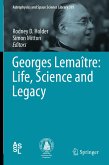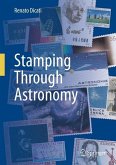En route we meet some fascinating personalities and learn about heated controversies. Shaviv shows how science lurched from one dogma to the next, time and again shattering much of what had been considered solid knowledge, until eventually a stable understanding arose.
Beginning with generally accepted science, the book ends in today's terra incognita of nuclear physics, astrophysics and cosmology. A monumental work that will fascinate scientists, philosophers, historians and lay readers alike.
Dieser Download kann aus rechtlichen Gründen nur mit Rechnungsadresse in A, B, BG, CY, CZ, D, DK, EW, E, FIN, F, GR, HR, H, IRL, I, LT, L, LR, M, NL, PL, P, R, S, SLO, SK ausgeliefert werden.
Hinweis: Dieser Artikel kann nur an eine deutsche Lieferadresse ausgeliefert werden.
"Here, theoretical astrophysicist Shaviv ... shows readers where, when, and how they were formed along with the sequence of scientific discovery, the detective work, and the interactions among the many scientific pioneers who contributed their piece of the puzzle to today's understanding of the field. ... This very scholarly approach is valuable for both historians of these subfields and readers seeking modern explanations of how the building blocks of our world were formed. ... Summing Up: Highly recommended. Upper-division undergraduates through professionals." (W. E. Howard III, Choice, Vol. 50 (4), December, 2012)









